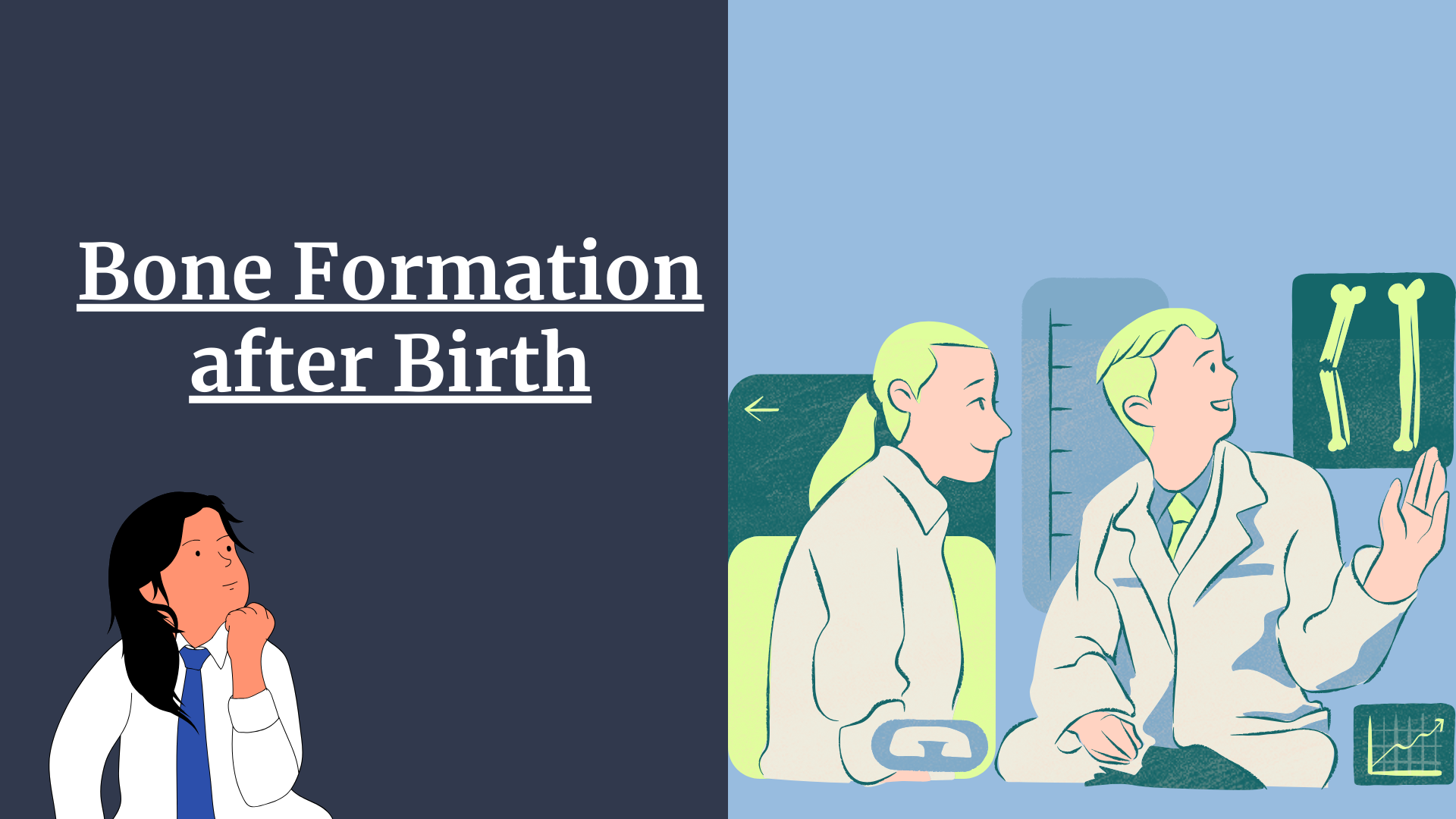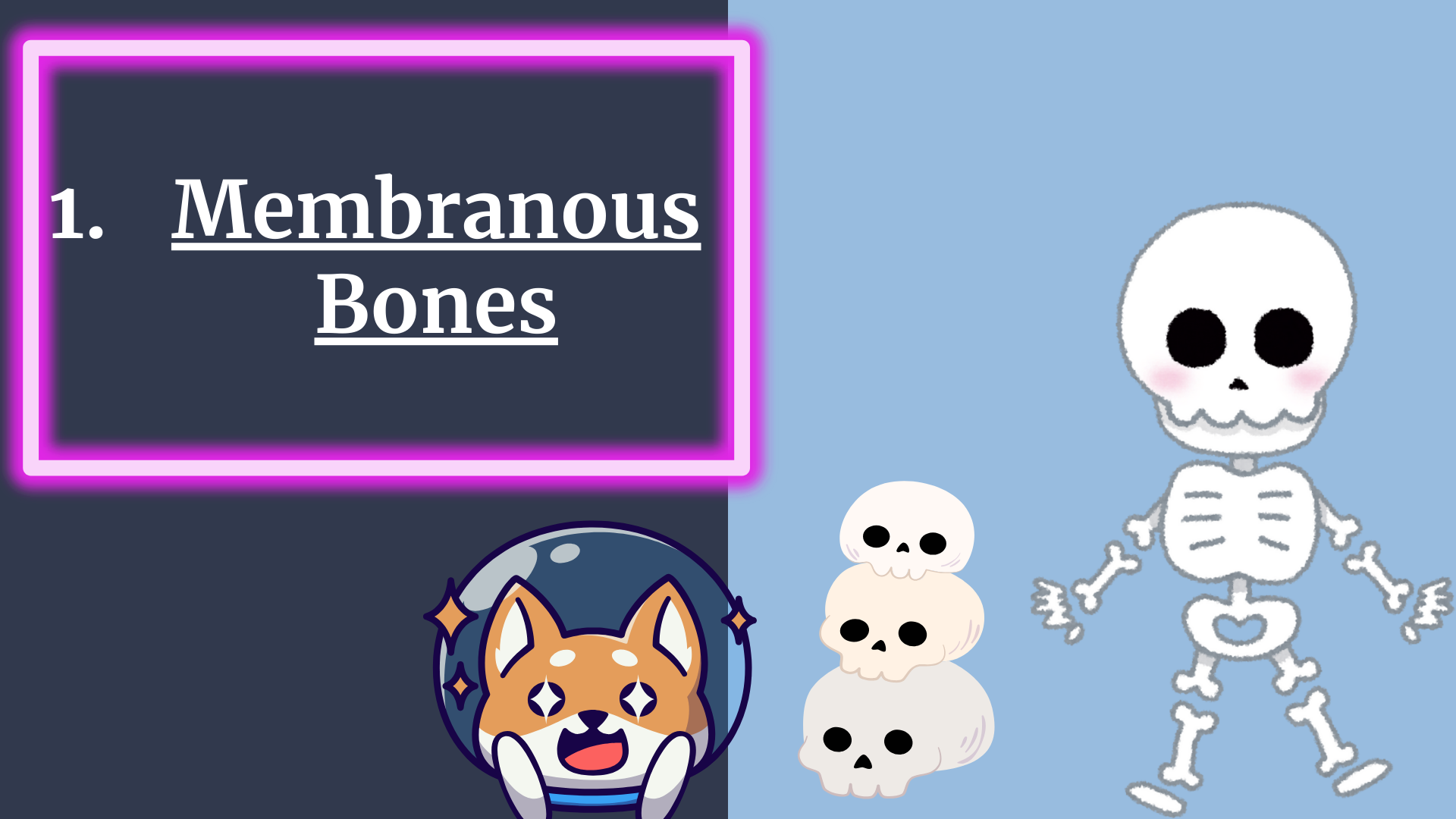Bone Growth and Remodeling

Bone Formation After Birth
The process of bone formation, known as osteogenesis, continues even after a baby is born. Many bones, both membranous and cartilaginous, are still developing and remodeling throughout childhood and adolescence. This ongoing growth and remodeling allow bones to reach their final forms, often continuing until early adulthood.

Membranous Bones
After birth, the membranous bones of the skull retain a significant amount of surrounding membranes. These membranes provide the flexibility needed for the skull to grow in size as the child develops. This growth is essential for accommodating the growing brain and ensuring proper cranial development.

Cartilaginous Bones
Growth of Cartilaginous Bones
- Growth Plates: Cartilaginous bones grow primarily through the activity of growth plates, also known as epiphyseal cartilages. These plates are located between the diaphysis (the long central shaft of the bone) and the epiphysis (the rounded ends of the bone). As the cartilage in these plates continues to grow, new bone tissue is constantly being formed at the diaphyseal end of the growth plate. This process allows bones to increase in length during the growing years of childhood and adolescence.
- Periosteum: The periosteum is a dense layer of connective tissue that surrounds the diaphysis of long bones. The inner layer of the periosteum contains osteoprogenitor cells, which have the potential to differentiate into osteoblasts—cells responsible for bone formation. As these osteoblasts deposit new bone tissue, the bones grow in diameter, increasing the overall strength and stability of the skeletal structure.
Remodeling of Cartilaginous Bones
- Closure of Growth Plates:
As the body matures into adulthood, the growth plates gradually stop producing new cartilage. Over time, these plates become narrower and eventually disappear altogether. This process, known as the closure of growth plates, results in the fusion of the diaphysis with the epiphysis, signaling the end of bone growth in length.
- Osteoclasts in Diaphysis:
While osteoblasts are responsible for adding new bone tissue, osteoclasts play a crucial role in bone remodeling by resorbing old bone tissue. As the shaft of a long bone (diaphysis) increases in diameter due to the activity of osteoblasts in the periosteum, osteoclasts remove bone tissue from the inside of the medullary cavity. This balanced process of bone deposition and resorption is essential for maintaining the proper shape and function of bones as they grow.
Conclusion
Bone growth and remodeling are dynamic processes that continue well into early adulthood, ensuring that bones develop correctly and maintain their strength throughout life. Understanding these processes is essential for recognizing how the skeletal system supports growth and adapts to the demands placed on it.